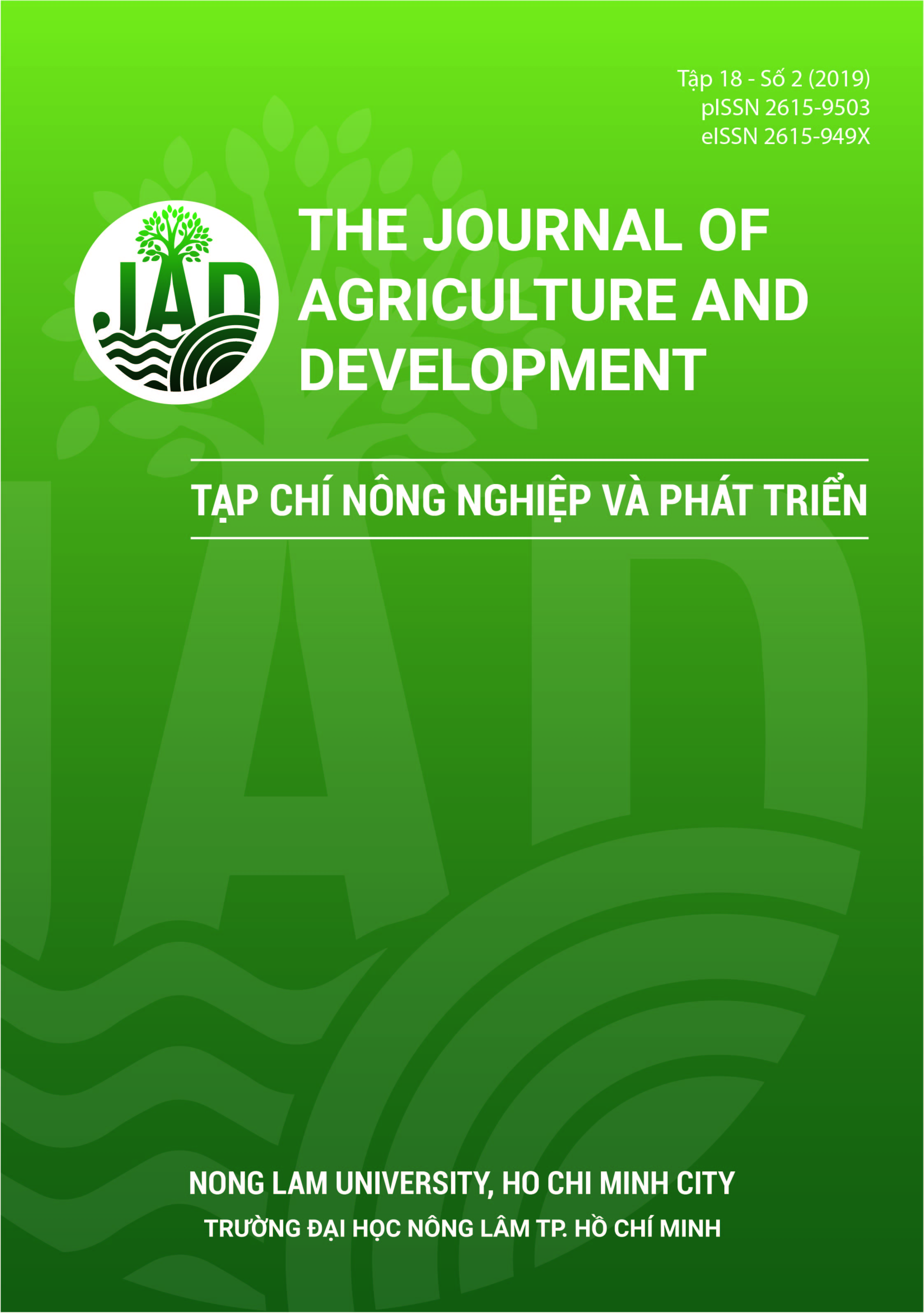Production of protein powder from salted duck eggs white
Main Article Content
Abstract
The objective of the research was to determine process conditions to pro-duce protein powder from salted duck egg whites based on the two main steps including precipitation of the protein from egg white and drying the protein. Optimization for process parameters of protein’s precipitation and drying were carried out by Response Surface Design method with the results obtained from the experiment. Basing on the determination of the limits of studied factors, defining the regression and choosing the optimal parameters for precipitation and drying processes. The result of optimal protein precipitation was the ratio of water/salted duck egg white: 3.5/1, the temperature of 80oC and precipitation time of 60 minutes with the process yield was 9.63% and the salt separation was 19.61%. The result of optimal drying process was the drying temperature at 75oC, material density: 0.35 g/cm2(wind speed of 0.64 m/s and drying time of 4 h) with the product solubility of 11.05%, the water content of 8.19% and aw of 0,476. Verifying the defined regression equation and experiment showed the different level is less than 5%, the defined regression equation is valid and has the potential to apply in production.
Article Details
References
Anderson, R. A., Conway, H. F., Pfiefer, V. F., & Griffin, E. L. (1969). Roll and extrusion - cooking of grain sorghum grits. Cereal Science Today 14(11), 373-381.
Chang, H. S., & Liu, M. H. (1994). Preservative effect of egg white lysozyme on fish ball. Journal of Chinese Society Animal Science 23, 441-448.
Chi, S. P., & Tseng, K. H. (1998). Physicochemical properties of salted pickled yolk from duck and chicken eggs. Journal of Food Science 33, 507-513. https://doi.org/10.1111/j.1365-2621.1998.tb15668.x
Hallier, A., Chevallier, S., Serot, T., & Prost, C. (2008). Freezing-thawing effects on the colour and texture of European catfish flesh. International Journal of Food Science & Technology 43(7), 1253-1262. https://doi.org/10.1111/j.1365-2621.2007.01601.x
Huang, J. J., Tsai, J. S., & Pan, B. S. (1999). Pickling time and electrodialysis affects functional properties of salted duck egg white. Journal of Food Biochemistry 23(6), 607-618. https://doi.org/10.1111/j.1745-4514.1999.tb00589.x
Huang, J. S., & Cheng, R. L. (1996). The effect of drying methods on powder characteristics of salted duck egg white powder. Journal of Chinese Institute of Food Science and Technology 23, 819-829.
Kaewmanee, T., Benjakul, S., & Visessanguan, W. (2009). Changes in chemical composition, physical properties and microstructure of duck egg as influenced by salting. Food Chemistry 112(3), 560-569. https://doi.org/10.1016/j.foodchem.2008.06.011
Lai, K. M., Chi, S. P., & Ko, W. C. (1999). Changes in yolk stages of duck egg during long - term brining. Journal of Agriculture and Food Chemistry 47(2), 733-736. https://doi.org/10.1021/jf980486r
Li, J., & Hsieh, Y. P. (2004). Traditional Chinese food technology and cuisine. Asia Pacific Journal of Clinical Nutrition 13, 147-155.
Lin, C. W., Jiang, Y. N., Su, H. P., & Chen, H. L. (1996). Emulsifying characteristics of salted duck egg white and its application in frankfruters. Journal of Chinese Institute of Food Science and Technology 23, 244-254.
Roth, B., Oines, S., Rotabakk, B. T., & Birkel, S. (2008). Using electricity as a tool in quality studies of Atlantic salmon. European Food Research and Technology 227(2), 571-577. https://doi.org/10.1007/s00217-007-0758-x








